Ultimate Guide to Mastering Cross Flow Filtration Systems for Enhanced Efficiency
In today’s rapidly evolving industrial landscape, the efficiency of separation processes is more crucial than ever, particularly in the realms of food processing, pharmaceuticals, and wastewater treatment. This is where the cross flow filtration system emerges as a game changer, offering a unique approach to enhance operational effectiveness. By allowing the feed to flow across the membrane instead of perpendicular to it, this technology minimizes fouling and maximizes productivity. The effectiveness of a cross flow filtration system lies not just in its design but also in its implementation and management.

In this ultimate guide, we will delve into the best practices, tips, and techniques for mastering cross flow filtration systems, ensuring that you can optimize performance, reduce costs, and achieve superior results in your filtration processes. Join us as we explore the potential of cross flow filtration and how it can transform your operations for the better.
Key Components of Cross Flow Filtration Systems Every Operator Should Know
Cross flow filtration (CFF) systems are an integral part of many industrial processes, enhancing efficiency and product purity. Understanding the key components of these systems is essential for operators aiming to optimize their performance. The heart of the CFF system lies in its filter membranes, which are designed to allow specific particles to pass while retaining others. Operators must be familiar with selecting the right membrane material based on the feed solution characteristics and the desired separation efficiency. This selection directly affects not only the filtration rate but also the longevity of the membranes and overall system reliability.
Another critical component is the feed pump, responsible for controlling the flow rate of the fluid through the system. Operators should pay close attention to the pump's specifications to ensure it meets the demand of the process without causing unnecessary wear or energy consumption. Furthermore, monitoring elements such as pressure gauges and flow meters is essential for maintaining optimal system performance. These instruments provide real-time data, enabling operators to detect issues early and adjust parameters to keep the filtration process running smoothly. By mastering these key components, operators can significantly enhance the efficiency and effectiveness of cross flow filtration systems.
Essential Steps for Setting Up Your Cross Flow Filtration System for Optimal Performance
Setting up a cross flow filtration system for optimal performance requires careful planning and execution. Begin by selecting the right components tailored to your specific application. Consider factors such as membrane material, pore size, and flow rate, which will significantly influence your system's efficiency. Integrating a high-quality pump to maintain consistent cross flow velocities is crucial, as inadequate flow can lead to membrane fouling and reduced filtration rates.
Next, ensure that your system is properly configured to maintain optimal operating conditions. This includes accurately calibrating pressure gauges and flow meters to monitor system performance. Regular maintenance and cleaning protocols should be established to prevent clogging and prolong membrane life. Additionally, documenting operational data will aid in identifying trends and areas for improvement, enabling you to make informed adjustments and enhance overall system efficiency. By following these essential steps, you can significantly boost the performance of your cross flow filtration system.
Ultimate Guide to Mastering Cross Flow Filtration Systems for Enhanced Efficiency
| Parameter | Description | Optimal Range | Impact on Performance |
|---|---|---|---|
| Feed Flow Rate | Volume of solution entering the system | 100-500 L/hr | Higher flow rates enhance filtration speed but may increase fouling |
| Transmembrane Pressure | Pressure difference across the membrane | 5-30 psi | Optimal pressure increases permeate flow while minimizing membrane damage |
| Temperature | Temperature of the feed solution | 20-60°C | Higher temperatures can reduce viscosity and increase flux |
| Membrane Material | Type of membrane used in the filtration process | Polymeric/ceramic | Different materials affect fouling resistance and permeability |
| Membrane Area | Total surface area of the membrane available for filtration | 1-50 m² | Larger areas increase capacity but may complicate management |
| Cleaning Frequency | How often the system is cleaned to maintain performance | Every 1-3 weeks | Regular cleaning extends membrane lifespan and maintains efficiency |
Checklist for Routine Maintenance to Ensure Maximum Efficiency
 Routine maintenance is crucial for maximizing the efficiency of cross-flow filtration systems. One of the first steps in upkeep is to establish a regular cleaning schedule. Over time, membranes can accumulate fouling materials that not only reduce flow rates but also compromise the quality of filtrate. Implementing a cleaning protocol that includes both chemical and mechanical methods can significantly extend the lifespan of the system while ensuring optimal performance.
Routine maintenance is crucial for maximizing the efficiency of cross-flow filtration systems. One of the first steps in upkeep is to establish a regular cleaning schedule. Over time, membranes can accumulate fouling materials that not only reduce flow rates but also compromise the quality of filtrate. Implementing a cleaning protocol that includes both chemical and mechanical methods can significantly extend the lifespan of the system while ensuring optimal performance.
Another essential aspect of maintenance is monitoring system parameters such as pressure, temperature, and flow rate. Keeping a close eye on these indicators can help identify early signs of wear or malfunction. If any parameter deviates from the normal operating range, it’s important to address the issue immediately. Regular calibration of sensors and regular inspections can prevent costly downtimes and help maintain consistent filtration quality.
Lastly, always ensure proper storage and handling of membrane modules. Exposure to harsh environments can lead to degradation and loss of effectiveness. By protecting membranes from extreme temperatures and contaminants, you can enhance the overall durability of the filtration system. With these maintenance tips, your cross-flow filtration system can continue to operate at peak efficiency for years to come.
Common Troubleshooting Tips for Cross Flow Filtration Systems
When working with cross flow filtration systems, unexpected issues can often arise, impacting both efficiency and output quality. One common problem is membrane fouling, which occurs when particles accumulate on the filter surface, reducing its permeability. To troubleshoot this, operators should regularly monitor transmembrane pressure (TMP) and flux rates. If a significant decline is observed, implementing a cleaning protocol with appropriate agents can help restore membrane performance. Moreover, scheduling routine maintenance checks can prevent fouling by ensuring that pre-filtration systems operate effectively.

Another frequent concern in cross flow filtration is a fluctuation in flow rates, which can disrupt the entire process. This could be due to various factors such as pump failure, blockages in the tubing, or incorrect valve settings. To address this, it’s crucial to maintain a comprehensive log of flow rate changes for analysis. Operators should also inspect pumps and valves regularly to ensure they are functioning correctly and replace any worn components immediately. By addressing these issues proactively, facilities can enhance the overall effectiveness of their filtration systems and ensure smoother operations.
Best Practices for Scaling Up and Improving the System's Efficiency
In the quest for enhanced efficiency in cross flow filtration systems, adopting best practices for scaling up and improving system performance is crucial. One of the key strategies involves optimizing the cleaning protocols. Regularly scheduled maintenance can prevent fouling and ensure that membranes operate at peak performance. Additionally, employing automated cleaning cycles, tailored to specific operations, can significantly reduce downtime and extend the lifespan of the filtration system.
Another vital aspect is monitoring operating parameters closely. Keeping track of pressure differentials, flow rates, and temperature can provide valuable insights. By analyzing this data, operators can identify early signs of potential issues and adjust the process accordingly. Implementing real-time monitoring systems can facilitate proactive maintenance, allowing adjustments to be made before small problems escalate into significant failures.
Lastly, considering the configuration of the filtration system can lead to efficiency gains. Utilizing advanced membrane technologies and optimizing module arrangement can enhance separation performance. Experimenting with different flow patterns may yield better results, reducing energy consumption and maximizing throughput. Embracing these best practices ensures that cross flow filtration systems are not only scalable but also operate at their highest efficiency.
Related Posts
-

Ultimate Guide to Navigating Challenges in the Paper Industry: Best Practices and Solutions
-
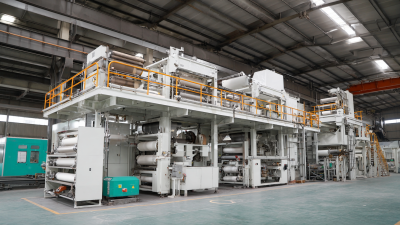
Ultimate Guide to Choosing the Right Bagasse Plate Making Machine for Your Business
-
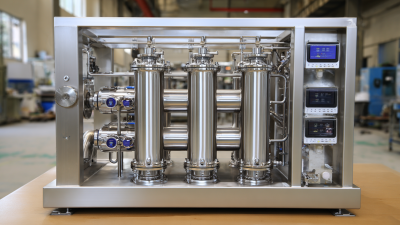
Understanding Industry Production Standards for the Best Micro Filtration System in Use
-
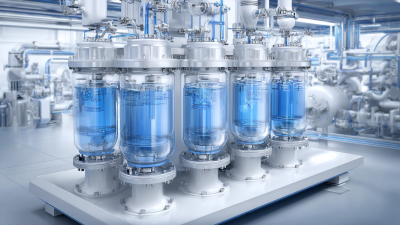
The Future of Advanced Vacuum Filtration Solutions
-
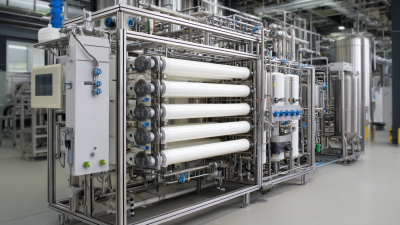
5 Industry Applications of the Best Cross Flow Filtration: 7 Compelling Reasons for Implementation
-
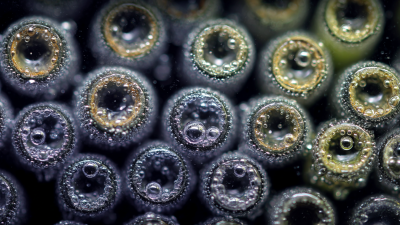
Exploring Alternatives to Best Microfiltration Membrane Technology for Enhanced Water Purification